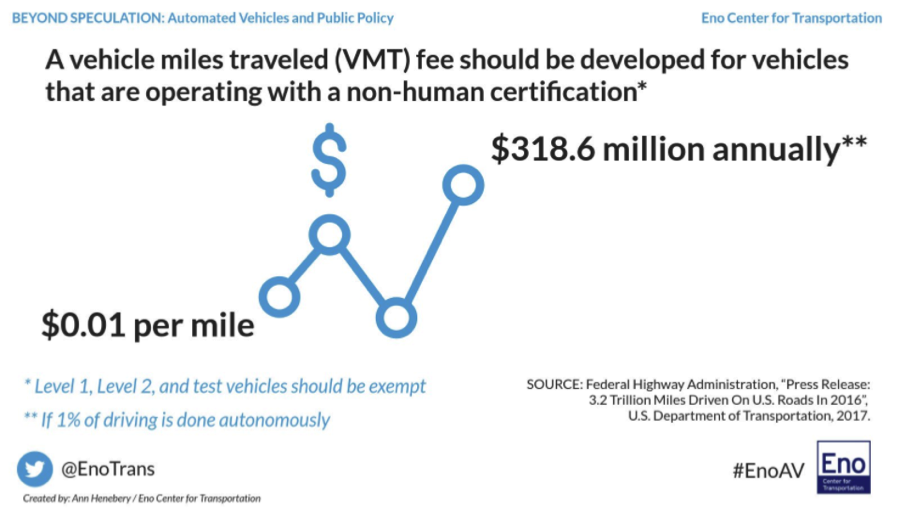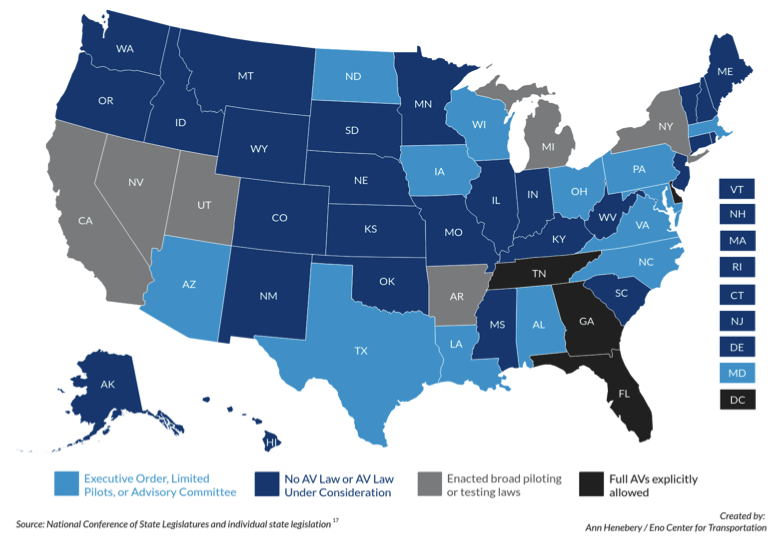June 23, 2017 | Updated June 27, 2017
 On Tuesday, the House Energy & Commerce Committee released summaries of the 14 bills on automated vehicles (AVs) that are being considered by its Digital Commerce and Consumer Protection Subcommittee (DCCP). The brief summaries, which are now posted on the committee’s website, match the bills that ETW first reported on June 9.
On Tuesday, the House Energy & Commerce Committee released summaries of the 14 bills on automated vehicles (AVs) that are being considered by its Digital Commerce and Consumer Protection Subcommittee (DCCP). The brief summaries, which are now posted on the committee’s website, match the bills that ETW first reported on June 9.
“These discussion drafts are a significant step towards introduction of meaningful legislation that will ensure consumer safety and provide clarity for federal and state governments on their role in regulating self-driving vehicles,” DCCP Chairman Bob Latta (R-OH 5) said in a written statement.
“Over time, this technology has demonstrated its potential to transform the transportation industry and save thousands of lives, and this hearing provides an opportunity to start this critically important discussion here in the House. Next week, members will explore how this legislation can increase safety, improve access and mobility, and grow our understanding of self-driving cars.”
DCCP will hold a subcommittee hearing on June 27 to discuss working drafts of the legislation. The draft text of the bills was posted in advance of the hearing – minus one previously announced bill (the “DECAL Act”) that would have required manufacturers to include a description of the vehicle’s level of automation on the Monroney sticker that is displayed in all new automobiles (UPDATE 6/26/17: E&C has since posted the 14th bill, the DECAL Act, on the hearing webpage). Hyperlinks to the text of the bills are available below:
- H.R. __, Let NHTSA Enforce Autonomous Vehicle Driving Regulations (LEAD’R) Act
- H.R. __, Practical Automated Vehicle Exemptions Act
- H.R. __, Renewing Opportunities for Automated Vehicle Development Act
- H.R. __, Expanding Exemptions to Enable More Public Trust Act
- H.R. __, Maximizing Opportunities for Research and the Enhancement of Automated Vehicles Act
- H.R. __, Increasing Information and Notification to Foster Openness Regarding Automated Vehicle Matters to States Act
- H.R. __, Disability Mobility Advisory Council Act
- H.R. __, Improving Mobility Access for Underserved Populations and Senior Citizens Advisory Council Act
- H.R. __, Automated Driving System Cybersecurity Advisory Council
- H.R. __, Sharing Automated Vehicle Records with Everyone for Safety Act
- H.R. __, Highly Automated Vehicle Pre-Market Approval Reduces Opportunities for More People to Travel Safely Act
- H.R. __, Guarding Automakers Against Unfair Advantages Reported in Public Documents Act
- H.R. __, Managing Government Efforts to Minimize Autonomous Vehicle Obstruction Act
- H.R. __, Designating Each Car’s Automation Level Act
Moving forward, the subcommittee aims to generate broad bipartisan support by incorporating a variety of stakeholders in discussions around the legislation. At least for now, DCCP has the wind at its back – AVs have been insulated from the partisan brinksmanship that has ground almost every other policy issue to a halt.
The subcommittee’s attention to building a broad base of support is evident – the legislative package contains provisions focused on issues ranging from safety to cybersecurity to consumer acceptance. Beyond measures that simply aim to accelerate AV development, a couple of provisions stand out as examples of how lawmakers intend to proactively prepare for the impacts of AVs and maximize their benefits.
 A recent Eno report, Beyond Speculation: Automated Vehicles and Public Policy, recommended that policymakers engage communities with limited mobility options and people with disabilities and eventually create federal discretionary grant programs to meet both environmental and accessibility goals.
A recent Eno report, Beyond Speculation: Automated Vehicles and Public Policy, recommended that policymakers engage communities with limited mobility options and people with disabilities and eventually create federal discretionary grant programs to meet both environmental and accessibility goals.
While these advisory councils would be a significant step towards including people with disabilities and underserved populations, the benefits of these councils will only be realized if their recommendations are turned into action afterwards.
Notably, this legislation does not address the real infrastructure challenges that federal, state, and local governments must tackle before AVs can be widely deployed. AVs do not require costly investments in sophisticated sensors or smart infrastructure to operate safely, but – like all road users – they operate best when roads are clearly marked and well maintained.
This is not yet a pressing issue, since AVs are not yet available to consumers. Nevertheless, Congress (especially the appropriations committees) and states will need to identify supplemental revenue streams to help ensure roadway state of good repair. Understanding this, Eno’s Beyond Speculation recommended implementing a per-mile usage fee for AVs starting at as little as one penny per mile, that can be used to fund further infrastructure investments.

The least enthusiastic stakeholders will likely be states that have been closely regulating AV testing on their public roadways, like California and New York. Currently, states are able to establish regulations around the testing and operation of AVs because the National Highway Traffic and Safety Administration (NHTSA) has not yet established Federal Motor Vehicle Safety Standards (FMVSS) for AVs.
This is generating significant regulatory uncertainty in the industry, as states have been using a wide range of inconsistent definitions, registration processes, and reporting requirements. As many as 18 states have enacted laws pertaining to AVs – and this year alone, state legislatures have considered at least 70 bills combined.

The proposed LEAD’R Act would add a clause to 49 U.S. Code § 30103 that specifically preempts states from regulating highly automated vehicles, as defined by SAE J3016 (proposed language and changes are in blue):
(1) HIGHLY AUTOMATED VEHICLES. No State or political subdivision of a State may adopt, maintain, enforce, impose, or continue in effect any law, rule, regulation, duty, requirement, standard, or other provision having the force and effect of law related to the design, construction, mechanical systems, software systems, or communications systems of highly automated vehicles or automated driving system equipment unless such law, rule, regulation, duty, requirement, standard, or other provision having the force and effect of law is identical to a standard prescribed under this chapter.’’
(2) MOTOR VEHICLE STANDARD: When a motor vehicle safety standard is in effect under this chapter ‘‘for a motor vehicle that is not a highly automated vehicle’’, a State or a political subdivision of a State may prescribe or continue in effect a standard applicable to the same aspect of performance of a motor vehicle or motor vehicle equipment only if the standard is identical to the standard prescribed under this chapter.
While the subcommittee is currently circulating a working draft of 14 bills, sources indicate that some bills may be added or removed, depending on feedback from committee members and the industry.
Ultimately, these may be combined into a single bill before the legislation heads to the floor – but to date, the subcommittee’s focus is on moving bipartisan AV bills across the finish line quickly rather than adhering to a particular strategy.

 On Tuesday, the House Energy & Commerce Committee released summaries of the 14 bills on automated vehicles (AVs) that are being considered by its Digital Commerce and Consumer Protection Subcommittee (DCCP). The brief summaries, which are now posted on the committee’s website, match the bills that
On Tuesday, the House Energy & Commerce Committee released summaries of the 14 bills on automated vehicles (AVs) that are being considered by its Digital Commerce and Consumer Protection Subcommittee (DCCP). The brief summaries, which are now posted on the committee’s website, match the bills that  A recent Eno report,
A recent Eno report, 



